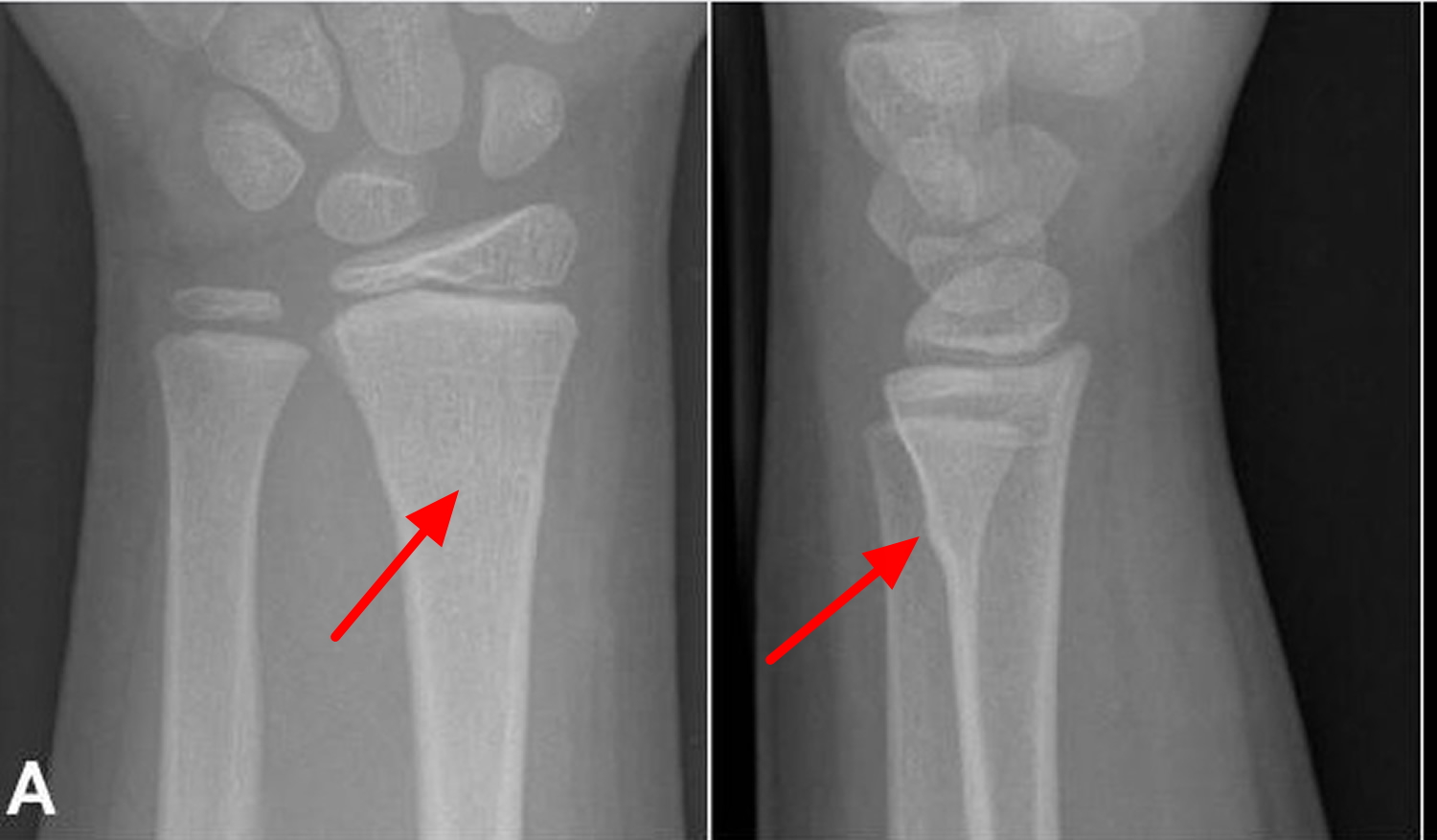Contents
What is a greenstick fracture
A greenstick fracture occurs when a bone bends and cracks, but doesn’t break all the way — like what happens when you bend a green stick of wood. Most broken bones in children are greenstick fractures because children’s bones are softer and more flexible than are those of adults. Greenstick fractures are caused by a bending force such as when one tries to break a soft branch. The fracture looks similar to what happens when you try to break a small, “green” branch on a tree.
A greenstick fracture occurs when a bone bends and cracks, but doesn’t break all the way instead of breaking completely into separate pieces.
Most greenstick fractures occur in children younger than 10 years of age. This type of broken bone most commonly occurs in children because their bones are softer and more flexible than are the bones of adults.
Even mild greenstick fractures are usually immobilized in a cast. In addition to holding the cracked pieces of the bone together so they can heal, a cast can help prevent the bone from breaking all the way through if the child falls on it again.
Greenstick fracture healing time
Greenstick fractures in young kids can heal as quickly as 3 weeks.
Buckle vs Greenstick fracture
In childhood, the periosteal sleeve is thick and protects the cortex. The bone is softer and more pliable than in adults. This accounts for the range of different fracture types that is uniquely seen in childhood. Buckle (torus) fractures are characterized by a compression failure of bone without disruption of the cortex on the tension side of the bone 1. Buckle (torus) fracture occurs when one side of the bone is compressed, which causes the other side to bend (buckle). This type of fracture is also more common in children.
The greenstick fractures differ from the buckle fracture as the cortex is disrupted on the tension side, but intact on the compression side of the fracture 2.
Figure 1. Greenstick fracture
Figure 2. Buckle fracture
Greenstick fracture causes
Childhood fractures most commonly occur with a fall. Arm fractures are more common than leg fractures, since the common reaction is to throw out your arms to catch yourself when you fall.
Greenstick fracture symptoms
Signs and symptoms will vary, depending on the severity of the greenstick fracture. Mild fractures might be mistaken for sprains or bruises. More-severe greenstick fractures may cause an obvious deformity, accompanied by significant pain and swelling.
Greenstick fracture diagnosis
During the physical exam, your doctor will inspect the affected area for tenderness, swelling, deformity, numbness or an open wound. Your child may be asked to move his or her fingers into certain patterns or motions to check for nerve damage. Your doctor may also examine the joints above and below the fracture.
X-rays can reveal most greenstick fractures. Your doctor may want to take X-rays of the uninjured limb, for comparison purposes.
Greenstick fracture treatment
Depending on the severity of the greenstick fracture, the doctor may need to straighten the bone manually so it will heal properly. Your child will receive pain medication and possibly sedation drugs for this procedure.
Greenstick fractures have a high risk of breaking completely through the bone, so most of these types of fractures are immobilized in a cast during healing.
On occasion, your doctor may decide that a removable splint could work just as well, particularly if the break is mostly healed. The benefit of a splint is that your child might be able to take it off briefly for a bath or shower.
X-rays are required in a few weeks to make sure the fracture is healing properly, to check the alignment of the bone, and to determine when a cast is no longer needed. Most greenstick fractures require four to eight weeks for complete healing, depending on the break and the age of the child.
- The anatomy of metaphyseal torus fractures. Light TR, Ogden DA, Ogden JA. Clin Orthop Relat Res. 1984 Sep; (188):103-11. https://www.ncbi.nlm.nih.gov/pubmed/6467706/[↩]
- Simple treatment for torus fractures of the distal radius. Davidson JS, Brown DJ, Barnes SN, Bruce CE. J Bone Joint Surg Br. 2001 Nov; 83(8):1173-5. https://www.ncbi.nlm.nih.gov/pubmed/11764434/[↩]






